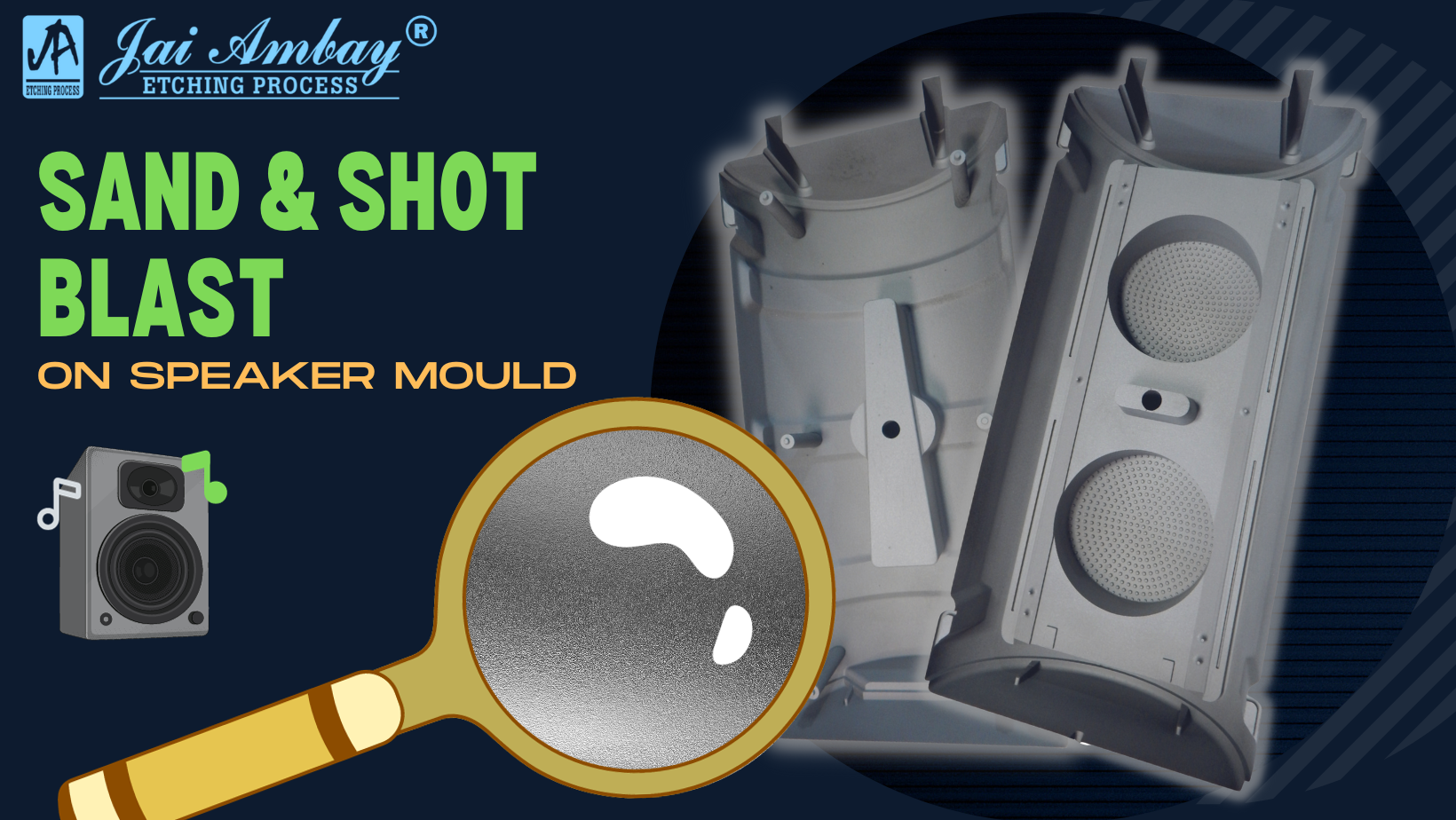Surface Revival: Sand and Shot Blasting in Speaker Mould Manufacturing
In the world of speaker manufacturing, accuracy and quality are paramount. Every component, no matter how small, plays a vital role in providing impeccable sound quality. One such component that is often overlooked but important is the speaker mold. These moulds, which shape the outer shell of the speaker, can experience wear and damage over time. To revive and revitalize them, the use of sandblasting and the addition of protective Teflon coating has become a game-changer. In this blog, we’ll explore how sand and shot blasting are transforming speaker moulds, giving these vital components a new life.
The Role of Speaker Moulds
Speaker moulds are responsible for shaping the speaker casing. These molds need to be precise and smooth to ensure that the acoustics and appearance of the speaker are of the highest quality. Over time, they may experience wear, damage, or surface irregularities, which affect the performance of the final product.
Enter Sand & Shot Blasting: A Resurgence Solution
Sand and shot blasting are abrasive surface treatment methods that use high-velocity particles to clean, peel, or treat surfaces. In the context of speaker molds, these processes can resurface the mold surface, removing imperfections and providing a new canvas for further enhancements.
The Sandblasting Process Unveiled
The process of sandblasting involves propagating an abrasive media, often sand or glass beads, at high speed against a surface using compressed air. Abrasive particles remove imperfections and contaminants, leaving a clean and textured surface for further treatment.
Benefits of Sandblasting for Speaker Moulds:
- Surface Renewal: Sandblasting removes surface irregularities, restoring the accuracy of the mould.
- Clean Surface: It removes contaminants and old coatings, leaving a clean slate for further treatment.
- Texture Enhancement: Sandblasting can be used to create specific textures or finishes on the surface of a mould.
The Addition of Teflon Coating
To enhance the longevity of speaker molds, it has become a standard practice to include Teflon coating. Teflon, a non-stick material known for its high temperature resistance and low friction properties, is applied to the surface of the mould. This protective layer not only adds a shiny finish but also prevents material from sticking to the mould during speaker casing production.
Benefits of Teflon Coating for Speaker Moulds:
- Non-Stick Properties: The Teflon coating prevents the material from sticking to the mold, ensuring a smooth moulding process.
- Corrosion Resistance: It acts as a barrier against corrosion and wear, increasing the lifespan of the mould.
- Easy Maintenance: The non-stick surface is easy to clean and maintain, reducing production time.
Elevating Speaker Mould Manufacturing
The combination of sanding and shot blasting, followed by Teflon coating, enhances speaker mould manufacturing in several ways:
- Quality Assurance: Surface irregularities and contaminants are removed, ensuring that each speaker cover is of the highest quality.
- Customization: Sandblasting can be applied to create specific textures or patterns on the mould, which enhances the visual appeal of the speaker casing.
- Efficiency: The non-stick properties of the Teflon coating reduce the possibility of defects during the moulding process, streamlining production.
The Future of Speaker Moulds
As technology continues to advance, so do the possibilities for enhancing speaker moulds. Researchers and engineers are exploring innovative materials and technologies to create moulds that are not only accurate but also customizable and highly flexible.
Conclusion: Sand & Shot Blasting – A Fresh Start for Speaker Moulds
Ultimately, sand and shot blasting, followed by Teflon coating, is redefining speaker mould manufacturing by providing a fresh start to these critical components. They ensure accuracy, quality and longevity of the speaker casing. As technology evolves, we can look forward to a future where speaker molds will become even more versatile, making it possible to produce high quality speakers with a touch of customization. Sand and shot blasting are not just surface treatments; They are the key to reviving and transforming speaker moulds into works of acoustic and visual excellence.


